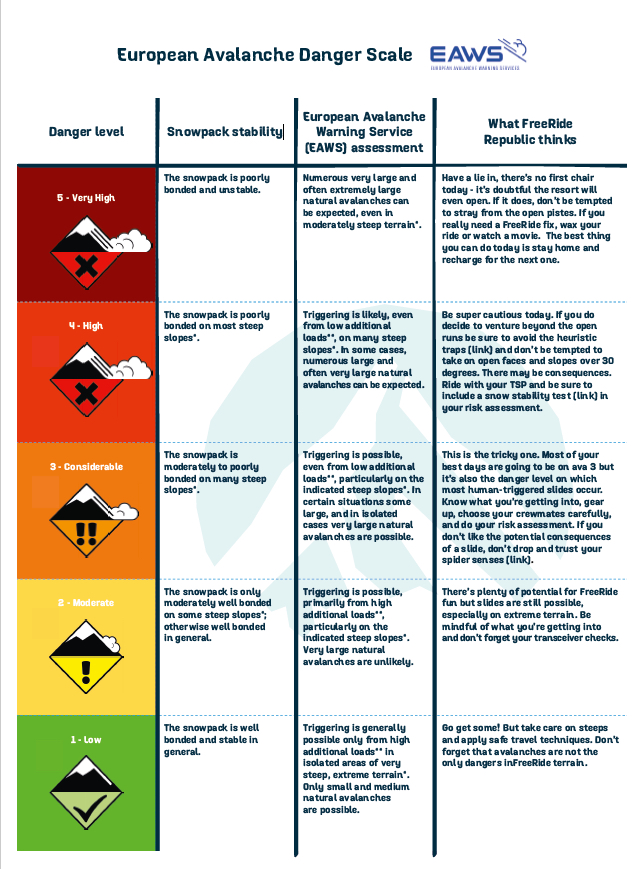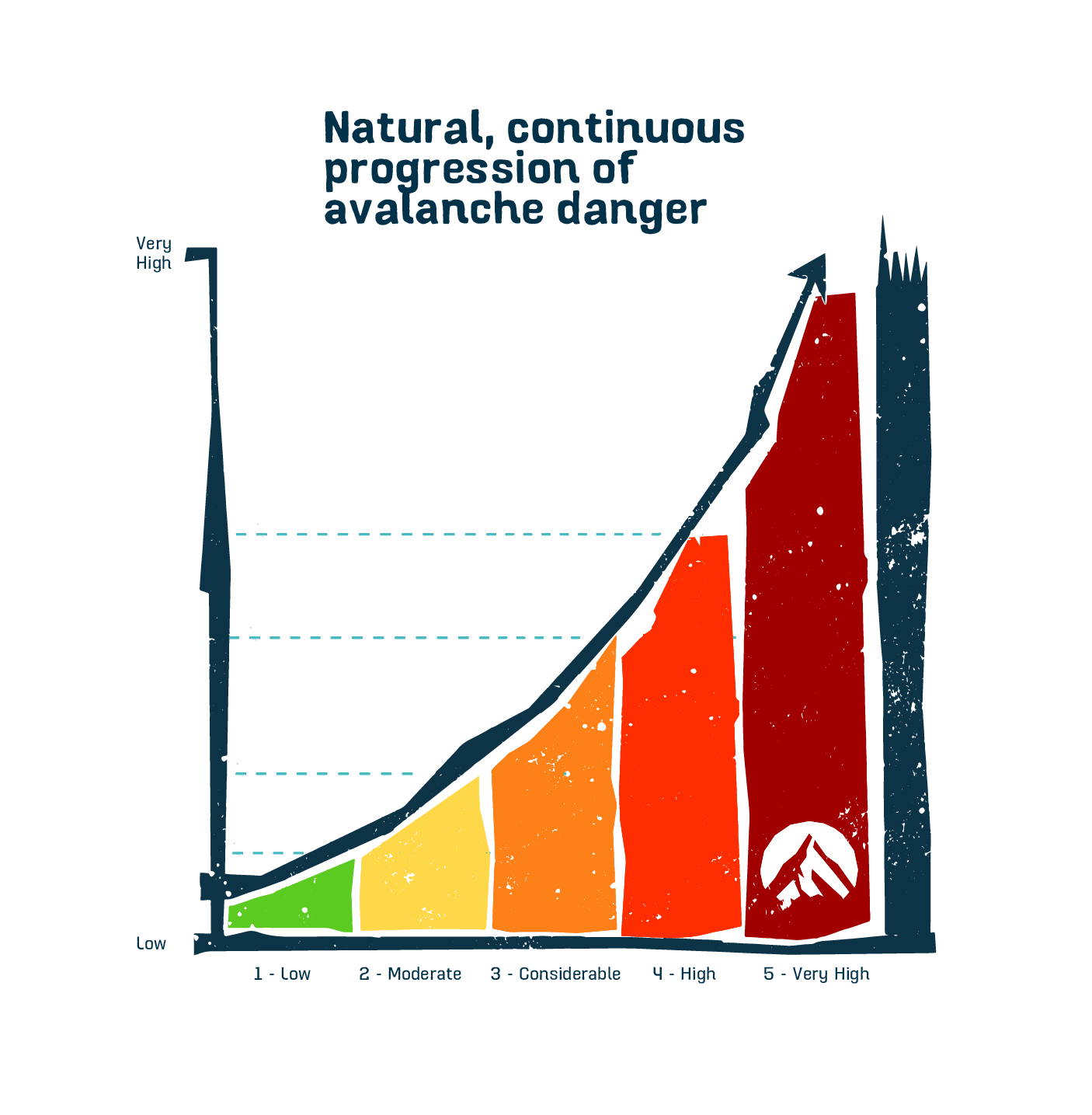

Since 1993, thanks to the European Avalanche Warning Services (EAWS), there has been a uniform five level avalanche danger scale in use across Europe, North America and most of the rest of the world.
The European Avalanche Danger Scale is a common scale that defines the danger level based on the likelihood and size of avalanches:
Level 5. Very high – Extraordinary avalanche conditions
Level 4. High – Very dangerous avalanche conditions
Level 3. Considerable – Dangerous avalanche conditions
Level 2. Moderate – Heightened avalanche conditions on specific terrain features
Level 1. Low – Generally stable conditions
So far so good. But snow science is complicated and like all complicated subjects our knowledge and understanding is constantly evolving. Add some big egos to the field and it’s no surprise that there is currently no internationally recognised set of symbols or form of words to describe each danger level. Communicating the typical characteristics, recommendations or effects is a similar story.
EAWS are working hard to ensure that the x5 levels, with corresponding symbols and colours are used globally, so we are using those in our diagram here.

Download an A4 colour version of the diagram from here.
While the experts have not agreed on a uniform set of symbols or phrases, there is one thing they can all agree on: nature does not conform to a linear scale. Avalanche danger changes continuously and rises disproportionally. This means that there is a range of danger within each level, most significantly at level 3 when 50% of all fatal avalanches occur.

No matter which avalanche service you use, here’s what we think you should know:
If you want to learn more, (and we really hope you do) check out these external links to two of the world’s foremost avalanche institutes.
Explore the themes below to find the best home for the content you want to learn about:
Really helpful article, thanks!